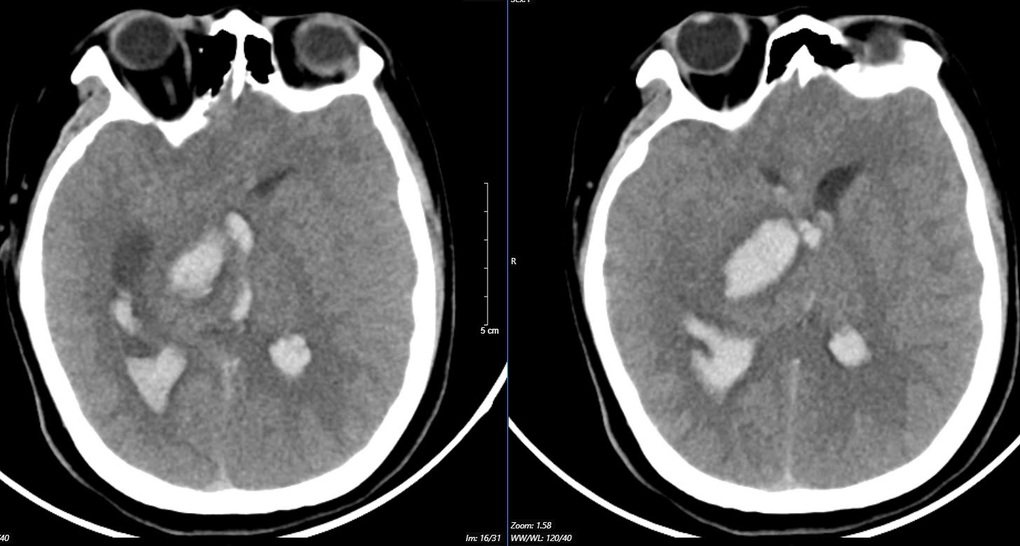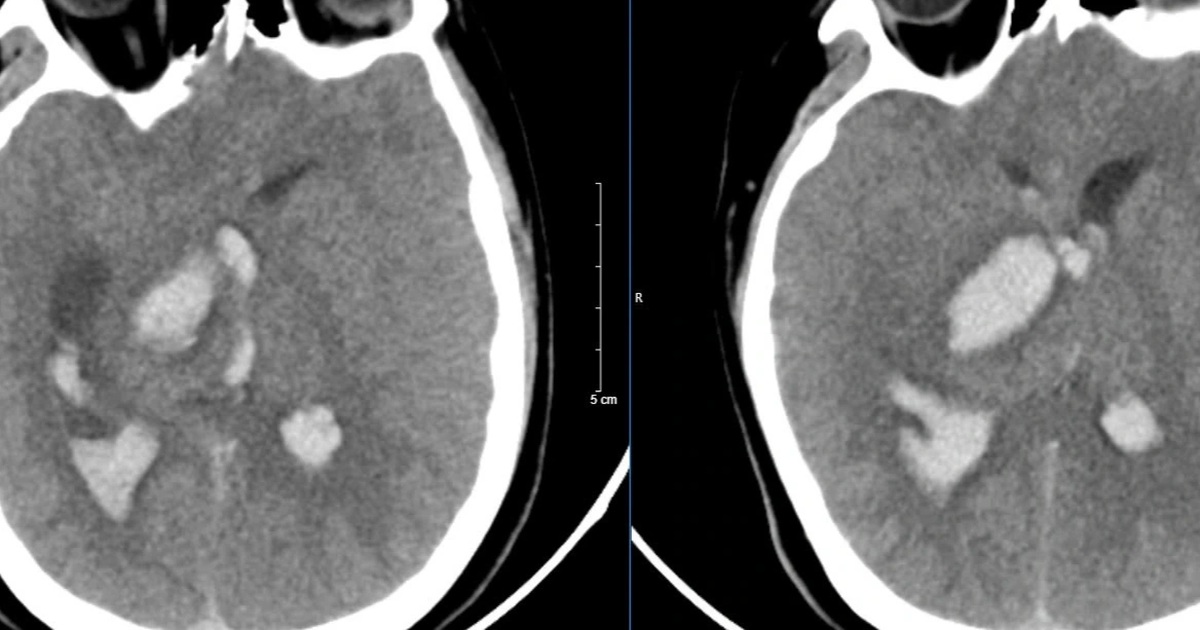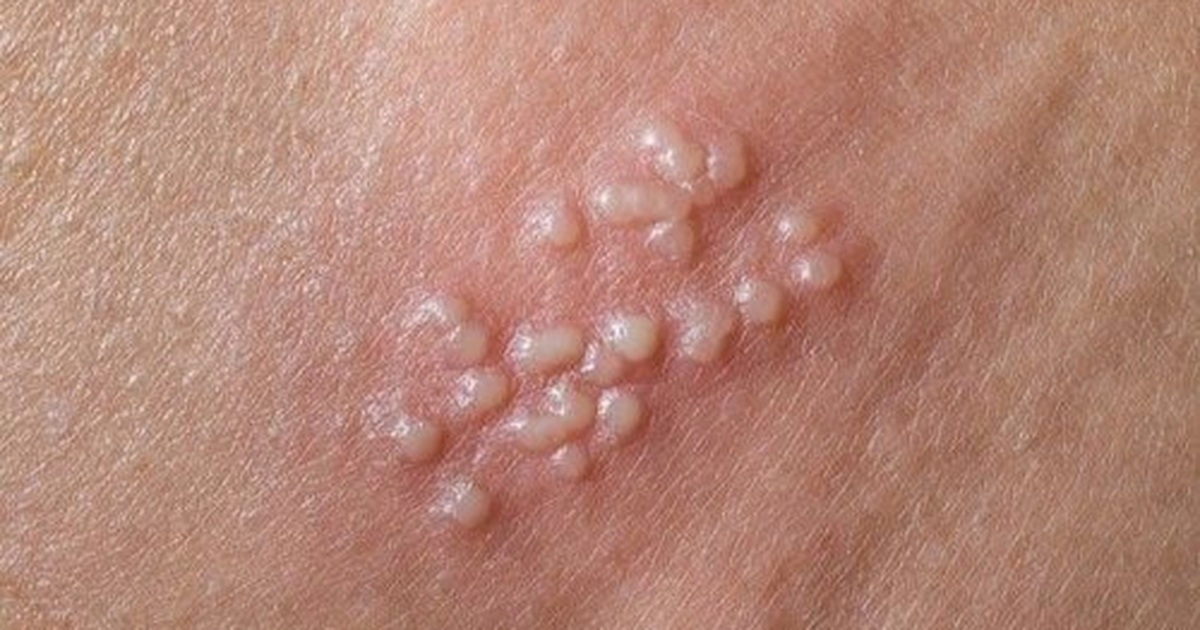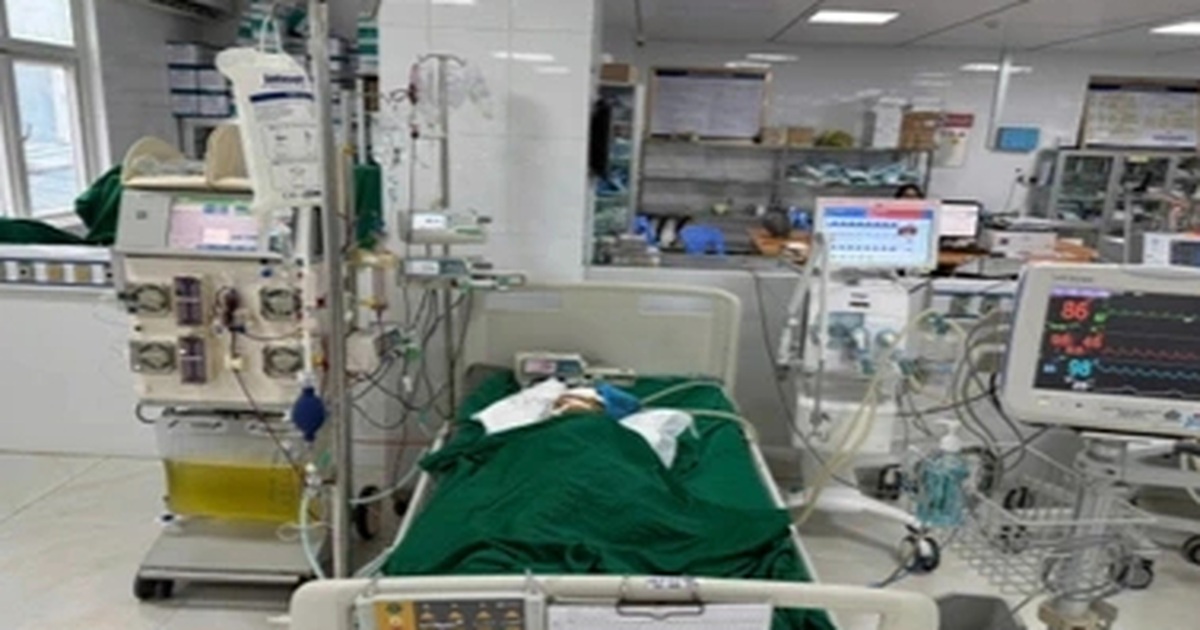In recent times, Bach Mai Hospital has treated three young patients with life-threatening conditions following severe headaches. These cases not only highlight the severity of the situation but also serve as a warning about an underlying condition that can affect anyone, especially younger individuals.
Three Critical Cases Linked to Brain Vascular Malformations
Case 1: 15-Year-Old Male Student
A 15-year-old male student fell into a deep coma after experiencing a severe headache. He was transferred to Bach Mai Hospital’s Stroke Center in critical condition, requiring mechanical ventilation and dilated pupils. The MSCT angiogram revealed intracranial hemorrhage due to the rupture of a vascular malformation. The rapid complications led to acute hydrocephalus, temperature dysregulation, and persistent high fever. Despite the medical team’s efforts, the family decided to take the patient home after two days of treatment, where he passed away.
 MSCT image showing intracranial hemorrhage from ruptured malformation
MSCT image showing intracranial hemorrhage from ruptured malformation
MSCT image showing intracranial hemorrhage from ruptured malformation (Image courtesy of the doctor).
Case 2: 19-Year-Old Patient
The second patient, a 19-year-old male with no previous health issues, was admitted in a state of convulsions and deep coma, with a Glasgow Coma Scale score of 6, quadriplegia, and mechanical ventilation. The MSCT angiogram confirmed intracranial hemorrhage and diffuse cerebral edema due to the rupture of the malformation. After surgery to remove the hematoma and the malformation, the patient is still undergoing intensive care in the ICU, though his prognosis for recovery is limited.
Case 3: 29-Year-Old Female Patient
A 29-year-old female patient, previously healthy, suddenly experienced severe headaches, hand numbness, and vomiting. Upon admission, she was in a deep coma with low blood pressure and dilated right pupil. The MSCT angiogram also detected intracranial hemorrhage. Despite aggressive surgery and treatment, she left with severe disabilities. After one month, she remains unresponsive and is completely paralyzed on her left side.
Understanding Arteriovenous Malformations of the Brain: A Dangerous Condition
According to Dr. Le Tuan Anh, a specialist at Bach Mai Hospital’s Stroke Center, arteriovenous malformations (AVMs) are developmental abnormalities of the brain’s vascular system. These malformations can rupture at any time, leading to intracranial hemorrhage, increased intracranial pressure, seizures, altered consciousness, and even sudden death. This risk is particularly common among younger adults, regardless of gender.
Typically, AVMs are discovered only when they rupture. However, sometimes they are detected incidentally during imaging exams. If the AVM has not ruptured, depending on its location, patients may experience non-specific symptoms such as headaches, dizziness, numbness or weakness in limbs, or epilepsy.
When an AVM ruptures, symptoms can range from mild to severe, including severe headaches, nausea, vomiting, hemiparesis, confusion, deep coma, and rapid death. The mortality rate upon rupture is estimated at 10-15%, and approximately 50% of survivors will have long-term disabilities.
Expert Recommendations
Dr. Tuan Anh advises that if any signs such as headaches, dizziness, numbness, or hemiparesis, or seizures appear, immediate medical evaluation is necessary. In particular, if there are severe symptoms like sudden altered consciousness, patients should seek emergency care immediately for timely diagnosis and treatment.
Raising awareness about this condition and the importance of regular check-ups is crucial, especially for younger adults. Only through these measures can we minimize the devastating consequences of arteriovenous malformations of the brain.
We hope this article helps readers understand the dangers of this condition and how to prevent it, safeguarding their own and their families’ health. Always listen to your body and seek timely medical assistance when needed.



